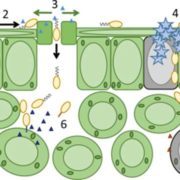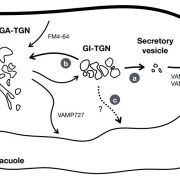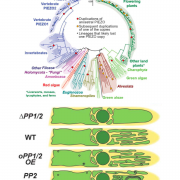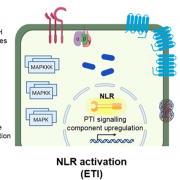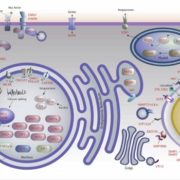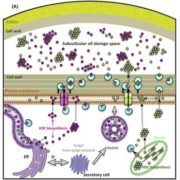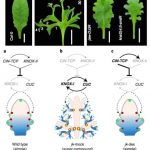A slicing mechanism facilitates host entry by plant-pathogenic Phytophthora (Nature Microbiol)
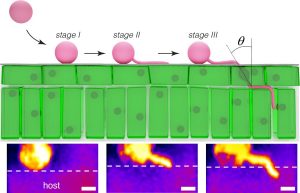 A plant has many layers of defense against a pathogen. One of the first challenges a pathogen faces is how to get inside the plant. Some bacteria sneak in through open stomatal pores, and some fungi form high-pressure appressoria that burst through walls. Here, Bronkhorst et al. investigated how the Phytophthora oomycete pathogens get into a plant. The authors noted that, unlike a fungal appressorium that penetrates at a 90° angle into the tissue, the oomycyte hypha enters on a diagonal. This type of oblique indentation is known in mechanics studies as slicing. Using an artificial, cuticle-like substrate and a fluorogenic mechanosensor, the authors investigated this entry mechanism, which they refer to as “naifu” (Japanese for knife). They found that it requires cell polarization involving the actin cytoskeleton, substrate adherence through protein secretions, and turgor generation. This new understanding of how Phytophthora first breach plant defenses suggests targets for control of these destructive plant killers. (Summary by Mary Williams @PlantTeaching) Nature Microbiol. 10.1038/s41564-021-00919-7
A plant has many layers of defense against a pathogen. One of the first challenges a pathogen faces is how to get inside the plant. Some bacteria sneak in through open stomatal pores, and some fungi form high-pressure appressoria that burst through walls. Here, Bronkhorst et al. investigated how the Phytophthora oomycete pathogens get into a plant. The authors noted that, unlike a fungal appressorium that penetrates at a 90° angle into the tissue, the oomycyte hypha enters on a diagonal. This type of oblique indentation is known in mechanics studies as slicing. Using an artificial, cuticle-like substrate and a fluorogenic mechanosensor, the authors investigated this entry mechanism, which they refer to as “naifu” (Japanese for knife). They found that it requires cell polarization involving the actin cytoskeleton, substrate adherence through protein secretions, and turgor generation. This new understanding of how Phytophthora first breach plant defenses suggests targets for control of these destructive plant killers. (Summary by Mary Williams @PlantTeaching) Nature Microbiol. 10.1038/s41564-021-00919-7


